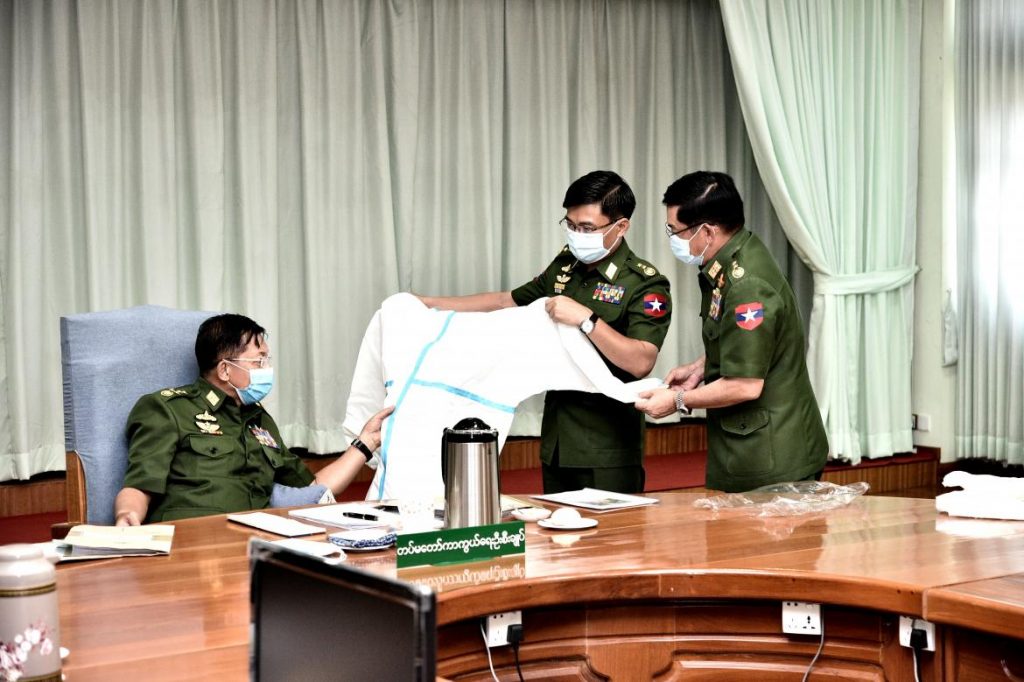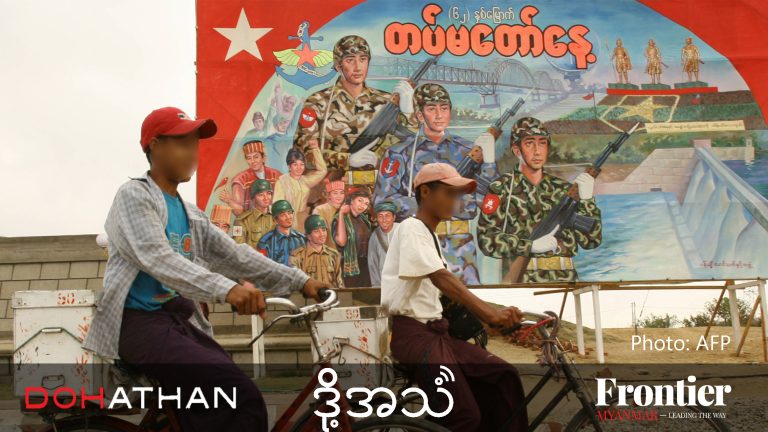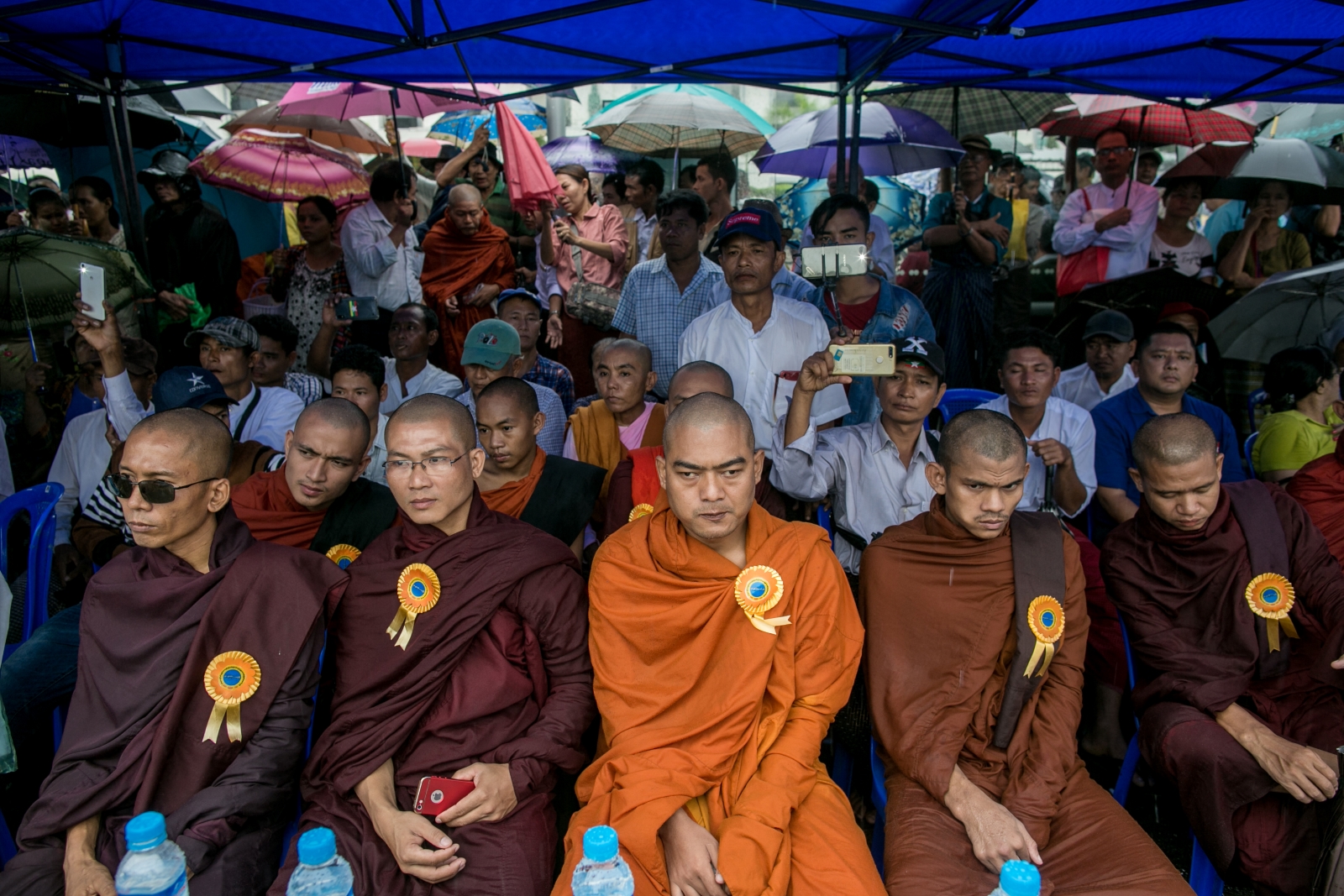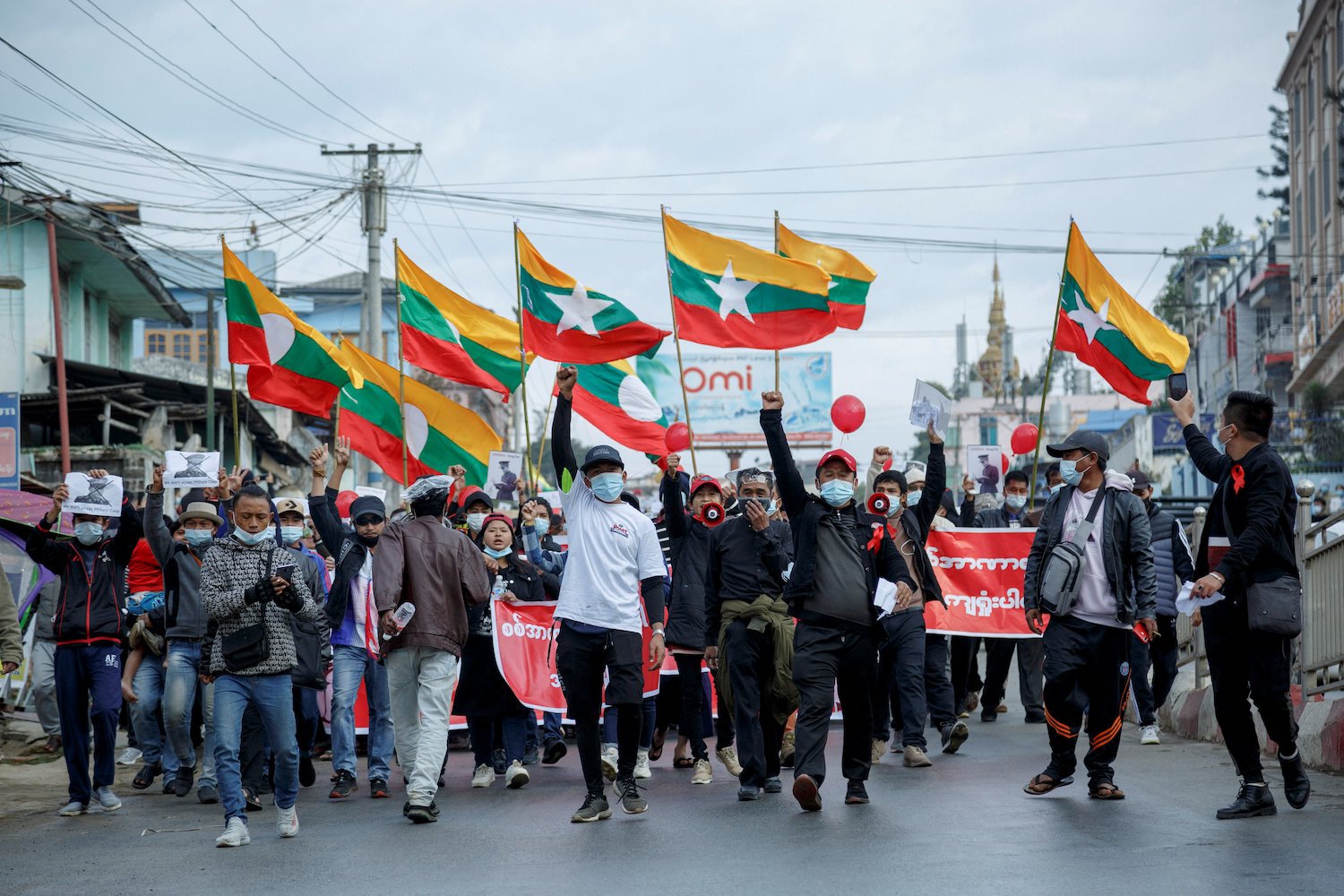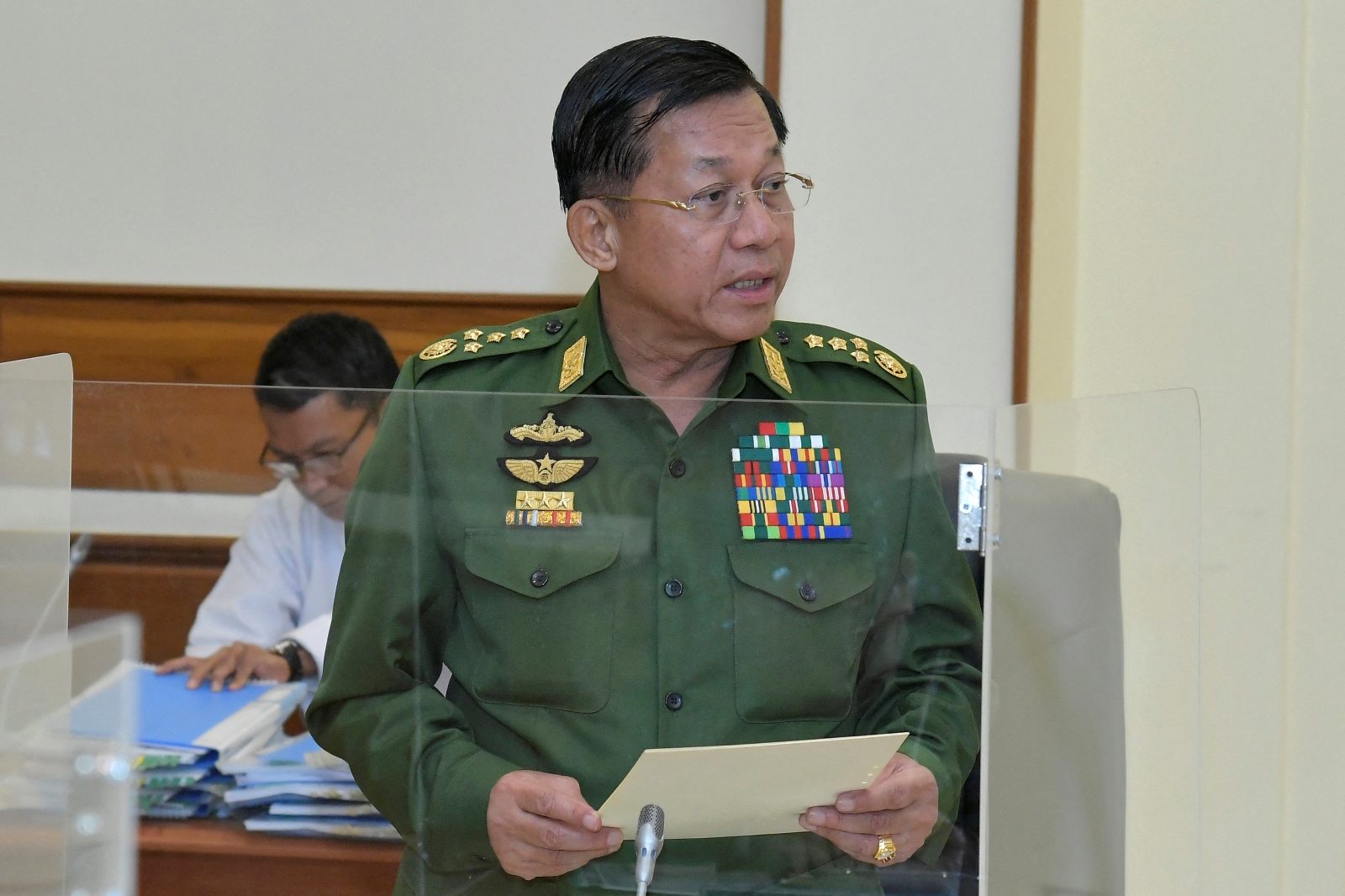Newly-appointed quartermaster general becomes the youngest lieutenant-general in the Tatmadaw as he continues a steady rise through the ranks.
By NANDA | FRONTIER
A reshuffle of senior Tatmadaw positions earlier this month has seen a new generation of officers promoted in a shake-up six months ahead of the general election expected in November.
The reshuffle is widely seen as an attempt by Commander-in-Chief Senior General Min Aung Hlaing, who has headed the Tatmadaw for nine years, to shore up support in the senior ranks of the Tatmadaw before his current five-year term ends in 2021.
The big mover is Major-General Kyaw Swar Lin, 49, the commander of the Tatmadaw’s Central Command, who has been promoted to become the military’s youngest lieutenant-general. He was appointed to replace Lieutenant-General Nyo Saw as quartermaster general, the sixth highest position in the Tatmadaw.
Kyaw Swar Lin is a graduate of the 35th batch of the elite Defence Services Academy and served as a staff officer with the rank of brigadier-general before being appointed to head Mandalay-based Central Command in 2018.
Support independent journalism in Myanmar. Sign up to be a Frontier member.
He served as a junior officer to Lieutenant-General Moe Myint Tun, commander of the Nay Pyi Taw-based Bureau of Special Operations 6, who is widely expected to become the next Tatmadaw commander-in-chief. Both served together on operations in Rakhine State prior to 2018.
Sources close to the Tatmadaw say that if Moe Myint Tun becomes commander-in-chief, newly appointed quartermaster general Kyaw Swar Lin could become deputy commander-in-chief.
Moe Myint Tun, who has risen steadily in the military hierarchy, served as personal assistant to Vice Senior General Maung Aye when the country was under junta rule.
The latest Tatmadaw reshuffle also saw Major-General Thaung Htike Shwe, the commander of Coastal Command, replace Major-General Myint Maw as commander of Nay Pyi Taw Command. Myint Maw was promoted to lieutenant-general and has retired.
Brigadier-General Saw Than Hlaing, from the 12th Military Operations Command, was appointed to replace Thaung Htike Shwe as head of Coastal Command.
Brigadier-General Ko Ko Oo, a general staff officer at Nay Pyi Taw Command, was appointed to replace Kyaw Swar Lin as head of Central Command.
Trusted lieutenants
The reshuffle has strengthened the position of those perceived as loyal to Min Aung Hlaing, who Senior General Than Shwe appointed commander-in-chief on March 30, 2011, when the military junta transferred power to the quasi-civilian administration headed by President U Thein Sein. Min Aung Hlaing took the title vice senior general a year later and senior general in March 2013.
Born in July 1956 in the southeastern town of Dawei, Min Aung Hlaing chose not to retire as commander-in-chief when he turned 60 in 2016, the year the National League for Democracy government took office. Under a 2014 law he was able to extend his term for another five years, media reports said at the time. However, analysts say that a further extension wouldl be politically difficult.
“The senior general knows very well that if he tries to keep his grip on power he will face criticism, so he will retire,” said political analyst U Ye Tun, a former lawmaker from Shan State. “Because he is retiring, he has promoted people he can trust. That is a tradition in Myanmar politics.”
Former minister for information and Tatmadaw officer U Ye Htut made a similar observation, comparing the recent changes to Than Shwe’s reshuffle in 2010. In August of that year senior officers such as U Shwe Mann, U Thein Sein and U Tin Aye retired to contest the first general election under the 2008 Constitution and more junior officers, including Min Aung Hlaing and the current deputy commander-in-chief, Vice Senior General Soe Win, were promoted.
After the 2010 election, Than Shwe retired from leading the country and since then has not publicly intervened in political affairs, despite reportedly being lobbied to do so by some former military officers.
In contrast, there is widespread speculation that Min Aung Hlaing has political aspirations and may harbour ambitions to become the president after the next general election, which the Union Election Commission insists will be held this year despite COVID-19.
Whether Min Aung Hlaing is able to become the next president will depend on the outcome of the election.
Under the constitution, the president is chosen from among three candidates by Myanmar’s 664-member national legislature, the Pyidaungsu Hluttaw, sitting as an electoral college.
The Amyotha Hluttaw (upper house), Pyithu Hluttaw (lower house) and un-elected military MPs, who hold 25 percent of all seats, each get to choose one presidential candidate; the candidate who attracts the most electoral college votes becomes head of state and the other two hold the post of vice president.
The party with the most seats has a clear advantage in deciding the outcome, as the NLD demonstrated after the 2015 election. It won 390 seats in the Pyidaungsu Hluttaw, well above the 333-seat threshold required to ensure the party could select its preferred candidate (though in practice, the threshold was lower due to the cancellation of voting in some constituencies because of armed conflict).
For Min Aung Hlaing to become president, a significant number of seats would need to change hands from the NLD to parties that would support his candidacy, such as the Union Solidarity and Development Party, which won just 41 seats in 2015.
Analysts of the Tatmadaw say that regardless of whether Min Aung Hlaing remains commander-in-chief, retires completely or seeks a political position after the election, he wants to ensure he has the support of senior officers.
Both Ye Tun and Sithu Aung Myint, a political analyst who has served in the Tatmadaw as well as the insurgent armies of the Karen National Union and the now-defunct Communist Party of Burma, said that because the result of the next election will determine whether Min Aung Hlaing can realistically become president, he won’t show his hand until after the poll.
“The commander-in-chief will not accept the position of vice president,” said Sithu Aung Myint. “He only dreams of being the president.”


